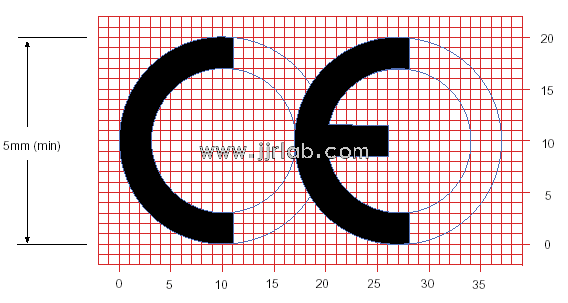
How much does CE marking cost?
In the European market, the CE mark is a necessary passport for electronic products to be sold in the region. The CE mark signifies that a product meets the relevant safety, health, and environmental protection requirements of the EU, being one of the basic requirements set by EU laws and regULations. For electronic products, the CE mark involves multiple standards and directives, and the cost varies depending on the product type, complexity, and the certifying body.

Main Standards for ce marking of Electronic Products
- EMC (Electromagnetic Compatibility) Directive: The EMC Directive (2014/30/EU) requires electronic products to function properly in their electromagnetic environment and not cause harmful electromagnetic interference to other devices. The testing standards for this directive include EN 55014, EN 55015, en 55032, EN 55035, en 61000 series (electromagnetic immunity tests), among others.
- LVD (Low Voltage) Directive: The lvd directive (2014/35/EU) mainly focuses on the electrical safety of electronic products, ensuring that products do not pose risks of electric shock, fire, or other safety hazards under normal usage conditions. Common testing standards include EN 60335 (household appliances), EN 60598 (lighting products), EN 62368 (information technology products), etc.
- Radio Equipment Directive (RED): For wireless electronic products such as Bluetooth headsets and wireless mice, compliance with the RED Directive (2014/53/EU) is required to ensure that their radio frequency emissions meet the relevant requirements and do not interfere with other wireless communication systems.
- Machinery Directive (MD): For electronic products with mechanical components, such as packaging machines and filling machines, compliance with the Machinery Directive (2006/42/EC) is necessary to ensure the safety of mechanical structures and operations.
Cost of CE Marking for Electronic Products
The cost of CE marking varies based on several factors, including:
- Product Type and Complexity: Different types of electronic products comply with different standards and directives. The more complex the product, the more difficult and costly the testing and auditing process. For example, the ce marking cost for wireless electronic products is usually higher than for standard DC electronic products because additional wireless frequency testing is required.
- Choice of Certifying Body: Different certifying bodies have different fee structures. Some bodies may have more expertise and experience in specific areas but may charge higher fees. Therefore, choosing the right certifying body is crucial for controlling certification costs.
- Testing and Evaluation Items: Depending on the directives and standards the product needs to comply with, the testing and evaluation items will vary. For example, DC electronic products may only require emc testing, while AC electronic products need both EMC and lvd testing, resulting in higher costs.
Range of CE Marking Costs
Below are the ce certification costs from JJR Lab in China (which can save you 30% on certification costs compared to other labs):
- Standard DC Electronic Products: For battery-powered products, the CE marking cost generally ranges from $500 to $850, mainly covering EMC directive testing.
- AC Electronic Products: For products like mobile phone chargers and small household appliances, which require both EMC and LVD testing, the cost generally ranges from $700 to $1200.
- Wireless Electronic Products: For products like Bluetooth headsets and wireless mice, the CE marking cost varies based on the wireless frequency and functionality, generally ranging from $800 to $1400.
- Mechanical Electronic Products: For products like packaging machines and filling machines that need to comply with the Machinery Directive, the cost is relatively higher, generally around $1500.
It should be noted that the above costs are for reference only. The actual costs will depend on the specific product and the requirements of the certifying body.
CE marking for electronic products is essential for entering the European market, with standards and costs varying by product type, complexity, and certifying body. Manufacturers should fully understand the directives and standards their products need to comply with, as well as the certification process and costs, to ensure their products can successfully obtain the CE mark and enter the European market.
Email:hello@jjrlab.com
Write your message here and send it to us
 How to Test IP68 Rating
How to Test IP68 Rating
 Differences Between FDA and LFGB for Food Contact
Differences Between FDA and LFGB for Food Contact
 Process and Precautions for Amazon CPC Certificate
Process and Precautions for Amazon CPC Certificate
 E-mark Certification Testing Service Laboratory
E-mark Certification Testing Service Laboratory
 Amazon ISO/IEC 17025 UL Testing Service Laboratory
Amazon ISO/IEC 17025 UL Testing Service Laboratory
 How to get CE Certification for Lighting Products?
How to get CE Certification for Lighting Products?
 CE Certification Standards & Process for Elect
CE Certification Standards & Process for Elect
 Japan METI Registration & Japanese Agent Servi
Japan METI Registration & Japanese Agent Servi
Leave us a message
24-hour online customer service at any time to respond, so that you worry!




